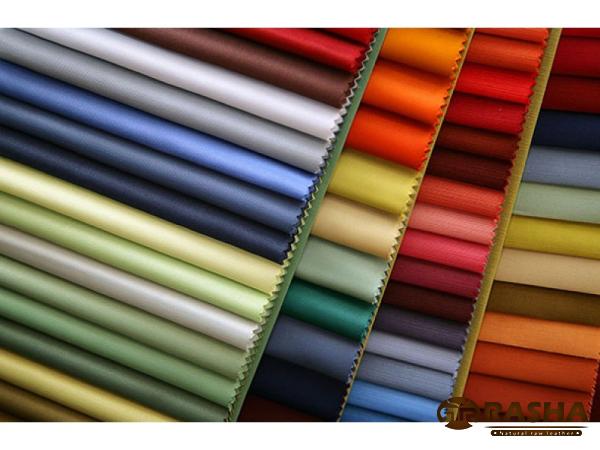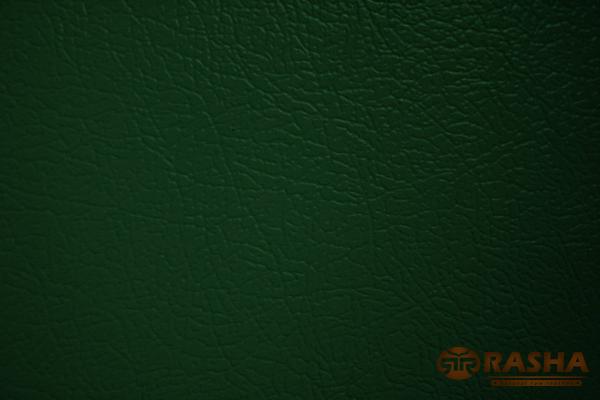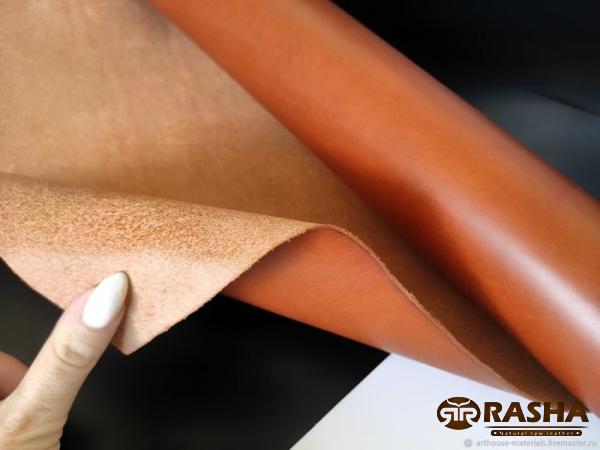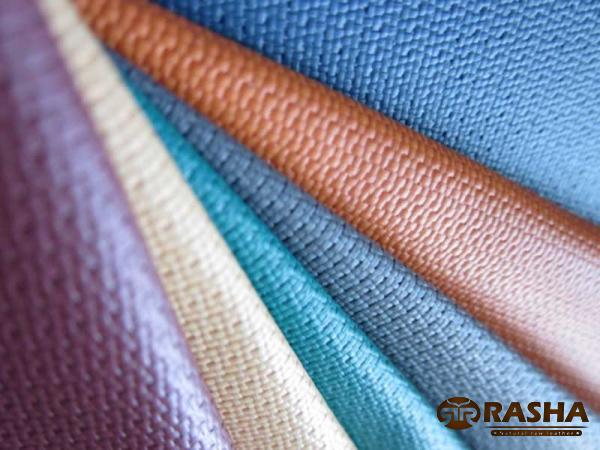Leather serves as a versatile and coveted material in the fashion, automotive, and upholstery industries due to its durability, aesthetic appeal, and luxurious texture. While various types of leather exist, two commonly used options are lambskin leather and cow leather. This article aims to provide a comprehensive comparison between lambskin and cow leather, highlighting their characteristics, qualities, applications, and pricing. Characteristics: 1. Softness and Suppleness: Lambskin leather is widely known for its exceptional softness and supple texture. Its thin and delicate nature offers a buttery touch, making it extremely comfortable to wear in clothing such as jackets, gloves, and accessories. In contrast, cow leather tends to be stiffer and thicker, providing a more robust and durable feel. 2. Strength and Durability: While cow leather is often preferred for its strength and durability, lambskin leather is not far behind. Although not as resilient as cow leather, lambskin, when treated and cared for properly, can still withstand regular use. It is important to note that lambskin leather is more prone to wear and tear, making it more suitable for occasional use or lighter applications. 3. Grain and Texture: The grain pattern of leather refers to the natural marking on the surface, which adds a distinctive visual appeal. Cow leather often exhibits a pronounced grain pattern due to the animal’s larger size, resulting in a more visible and textured appearance. Comparatively, lambskin leather has a smoother grain, with fewer natural blemishes and markings. 4. Weight and Thickness: While lambskin leather is usually lighter in weight and thinner compared to cow leather, the exact weight and thickness depend on the specific tanning and finishing process. The lighter weight of lambskin leather makes it an attractive option for garments and accessories, providing comfort and ease of movement.

leather
 5. Flexibility and Drapability: Lambskin leather’s natural flexibility and drapability make it an ideal choice for creating garments that require a close fit and contouring to the body. On the other hand, cow leather’s stiffness limits its flexibility and may require additional treatment or processing to achieve the desired shape and draping. Qualities and Benefits: 1. Aesthetics: Lambskin leather possesses a luxurious and refined appearance, making it a favored choice in high-end fashion designs. Its smooth and sleek surface enhances the elegance and sophistication of any product it adorns. Cow leather, while not as refined, exudes a more rugged and masculine aesthetic, making it popular for creating durable and utilitarian products like belts, wallets, and boots. 2. Comfort: The exceptional softness and fine grain of lambskin leather make it highly comfortable to wear. It gently molds to the wearer’s body, providing a snug fit and optimal comfort. This quality makes it perfect for creating apparel items like jackets and gloves that require a comfortable and luxurious feel. Cow leather, with its sturdiness and thickness, offers a sense of ruggedness, which may be preferred by individuals seeking a robust and long-lasting option. 3. Breathability: Lambskin leather stands out for its exceptional breathability, allowing air circulation and moisture absorption. This feature makes it an excellent choice for garments intended for warm or humid climates. Cow leather may possess a slightly lower level of breathability due to its thickness, but it still offers sufficient comfort in most situations. 4. Versatility: Both lambskin and cow leather have versatile applications in various industries. Lambskin leather’s softness and pliability make it suitable for creating high-end fashion garments, accessories, and upholstery items. Cow leather’s strength and durability lend themselves well to heavy-duty products like furniture upholstery, automotive interiors, and footwear. Pricing Considerations: The cost of lambskin leather is generally higher than cow leather due to several factors. Lambskin leather is considered a luxury material, known for its softness, refinement, and exclusivity. The limited supply and higher production costs contribute to its higher price tag.
5. Flexibility and Drapability: Lambskin leather’s natural flexibility and drapability make it an ideal choice for creating garments that require a close fit and contouring to the body. On the other hand, cow leather’s stiffness limits its flexibility and may require additional treatment or processing to achieve the desired shape and draping. Qualities and Benefits: 1. Aesthetics: Lambskin leather possesses a luxurious and refined appearance, making it a favored choice in high-end fashion designs. Its smooth and sleek surface enhances the elegance and sophistication of any product it adorns. Cow leather, while not as refined, exudes a more rugged and masculine aesthetic, making it popular for creating durable and utilitarian products like belts, wallets, and boots. 2. Comfort: The exceptional softness and fine grain of lambskin leather make it highly comfortable to wear. It gently molds to the wearer’s body, providing a snug fit and optimal comfort. This quality makes it perfect for creating apparel items like jackets and gloves that require a comfortable and luxurious feel. Cow leather, with its sturdiness and thickness, offers a sense of ruggedness, which may be preferred by individuals seeking a robust and long-lasting option. 3. Breathability: Lambskin leather stands out for its exceptional breathability, allowing air circulation and moisture absorption. This feature makes it an excellent choice for garments intended for warm or humid climates. Cow leather may possess a slightly lower level of breathability due to its thickness, but it still offers sufficient comfort in most situations. 4. Versatility: Both lambskin and cow leather have versatile applications in various industries. Lambskin leather’s softness and pliability make it suitable for creating high-end fashion garments, accessories, and upholstery items. Cow leather’s strength and durability lend themselves well to heavy-duty products like furniture upholstery, automotive interiors, and footwear. Pricing Considerations: The cost of lambskin leather is generally higher than cow leather due to several factors. Lambskin leather is considered a luxury material, known for its softness, refinement, and exclusivity. The limited supply and higher production costs contribute to its higher price tag.
Specifications of leather
 Additionally, the quality of the hide, the sourcing, and the craftsmanship further influence the pricing of both lambskin and cow leather products. Conclusion: Both lambskin and cow leather offer their distinct advantages and qualities. The choice between the two depends on the specific needs, preferences, and budget of the user/application at hand. Lambskin leather impresses with its softness, elegance, and fine texture, making it highly favored in luxurious fashion items. On the other hand, cow leather’s sturdiness, durability, and affordability make it a popular choice for a range of practical applications. Ultimately, the selection between lambskin and cow leather relies on striking the right balance between aesthetics, functionality, and value. Lambskin Leather Versus Cow Leather: A Detailed Comparative Analysis 1. Fashion Industry: Lambskin leather holds a prominent position in the fashion industry due to its luxurious appeal and superior softness. It is commonly used in the production of high-end fashion garments such as jackets, coats, and gloves. The delicate nature of lambskin leather allows for intricate detailing and a perfect fit, making it an excellent choice for designers looking to create elegant, form-fitting pieces. In contrast, cow leather, with its more rugged and masculine aesthetic, is often utilized for creating accessories such as belts, bags, and footwear that require durability and a robust appearance. 2. Automotive Industry: In the automotive industry, both lambskin and cow leather find applications in upholstery. Lambskin leather is favored for its comfort and breathable properties, making it an ideal choice for creating luxury car interiors that prioritize a plush, comfortable ride. Cow leather, with its strength and durability, is commonly used in commercial vehicles and heavy-duty vehicles where longevity and resistance to wear and tear are crucial. 3. Upholstery and Furniture: When it comes to upholstery and furniture, cow leather is preferred for its resilience and durability, making it ideal for high-traffic areas. It is commonly used in the production of sofas, armchairs, and ottomans where strength and resistance to abrasion are essential. Lambskin leather, with its delicate nature, is more commonly used in accent furniture pieces or areas that require a touch of sophistication and luxury. 4. Footwear: Lambskin leather finds extensive use in the production of high-quality shoes due to its softness, flexibility, and ability to conform to the wearer’s foot. It provides a comfortable and luxurious experience in dress shoes, loafers, and other footwear styles. Cow leather, with its durability and sturdiness, is often utilized in the production of boots, work shoes, and other footwear styles that require extra protection and longevity. 5. Accessories: Both lambskin and cow leather are extensively used in creating various accessories. Lambskin leather excels in small leather goods such as wallets, cardholders, and phone cases, providing a supple and refined feel. Cow leather, with its rugged and enduring properties, is often employed in the production of belts, keychains, and watch straps, ensuring longevity and durability.
Additionally, the quality of the hide, the sourcing, and the craftsmanship further influence the pricing of both lambskin and cow leather products. Conclusion: Both lambskin and cow leather offer their distinct advantages and qualities. The choice between the two depends on the specific needs, preferences, and budget of the user/application at hand. Lambskin leather impresses with its softness, elegance, and fine texture, making it highly favored in luxurious fashion items. On the other hand, cow leather’s sturdiness, durability, and affordability make it a popular choice for a range of practical applications. Ultimately, the selection between lambskin and cow leather relies on striking the right balance between aesthetics, functionality, and value. Lambskin Leather Versus Cow Leather: A Detailed Comparative Analysis 1. Fashion Industry: Lambskin leather holds a prominent position in the fashion industry due to its luxurious appeal and superior softness. It is commonly used in the production of high-end fashion garments such as jackets, coats, and gloves. The delicate nature of lambskin leather allows for intricate detailing and a perfect fit, making it an excellent choice for designers looking to create elegant, form-fitting pieces. In contrast, cow leather, with its more rugged and masculine aesthetic, is often utilized for creating accessories such as belts, bags, and footwear that require durability and a robust appearance. 2. Automotive Industry: In the automotive industry, both lambskin and cow leather find applications in upholstery. Lambskin leather is favored for its comfort and breathable properties, making it an ideal choice for creating luxury car interiors that prioritize a plush, comfortable ride. Cow leather, with its strength and durability, is commonly used in commercial vehicles and heavy-duty vehicles where longevity and resistance to wear and tear are crucial. 3. Upholstery and Furniture: When it comes to upholstery and furniture, cow leather is preferred for its resilience and durability, making it ideal for high-traffic areas. It is commonly used in the production of sofas, armchairs, and ottomans where strength and resistance to abrasion are essential. Lambskin leather, with its delicate nature, is more commonly used in accent furniture pieces or areas that require a touch of sophistication and luxury. 4. Footwear: Lambskin leather finds extensive use in the production of high-quality shoes due to its softness, flexibility, and ability to conform to the wearer’s foot. It provides a comfortable and luxurious experience in dress shoes, loafers, and other footwear styles. Cow leather, with its durability and sturdiness, is often utilized in the production of boots, work shoes, and other footwear styles that require extra protection and longevity. 5. Accessories: Both lambskin and cow leather are extensively used in creating various accessories. Lambskin leather excels in small leather goods such as wallets, cardholders, and phone cases, providing a supple and refined feel. Cow leather, with its rugged and enduring properties, is often employed in the production of belts, keychains, and watch straps, ensuring longevity and durability.
buy leather
 6. Care and Maintenance: It is crucial to note that both lambskin and cow leather require proper care and regular maintenance to maintain their appearance and lifespan. While lambskin leather is generally more sensitive to scratches and tears due to its delicate nature, cow leather is more resistant to everyday wear and tear. Conditioning and occasional cleaning with appropriate leather products are essential to preserve the natural qualities and extend the longevity of both types of leather. 7. Sustainability and Ethical Considerations: In recent years, there has been an increased emphasis on sustainability and ethical practices in the leather industry. The sourcing and production processes for both lambskin and cow leather can vary significantly, impacting the overall environmental impact and animal welfare. It is important for businesses and consumers to prioritize suppliers who adhere to responsible and sustainable practices, such as sourcing leather from certified and reputable farms or using environmentally friendly tanning processes. 8. Availability and Cost: Lambskin leather, with its limited supply and higher production costs, tends to be more expensive compared to cow leather. The price difference reflects the exclusivity and luxurious appeal of lambskin leather. However, cow leather, being more readily available and easier to source, provides a cost-effective option for businesses looking for versatile and durable leather products without compromising on quality. 9. Branding and Marketing Considerations: When it comes to branding and marketing, the choice between lambskin and cow leather depends on the target market and the brand identity. Lambskin leather, with its softness and refinement, can be leveraged to position a brand as luxurious and high-end. On the other hand, cow leather, with its rugged appeal, can cater to brands targeting a more adventurous and utilitarian consumer base. 10. Consumer Preference: Consumer preference plays a significant role in determining the popularity and demand for lambskin or cow leather products. While some consumers prioritize the comfort and refined experience offered by lambskin leather, others may opt for the durability and ruggedness of cow leather. Businesses must align their product offerings with consumer preferences to maximize sales and customer satisfaction. Conclusion: The choice between lambskin leather and cow leather ultimately depends on the specific needs, preferences, and target market of a business. Lambskin leather’s softness, elegance, and luxurious appeal make it a sought-after material in the fashion industry, while cow leather’s strength and durability make it suitable for a wide range of applications. By considering factors such as aesthetics, functionality, cost, and sustainability, businesses can make informed decisions when selecting the type of leather that best suits their products, branding, and target audience.
6. Care and Maintenance: It is crucial to note that both lambskin and cow leather require proper care and regular maintenance to maintain their appearance and lifespan. While lambskin leather is generally more sensitive to scratches and tears due to its delicate nature, cow leather is more resistant to everyday wear and tear. Conditioning and occasional cleaning with appropriate leather products are essential to preserve the natural qualities and extend the longevity of both types of leather. 7. Sustainability and Ethical Considerations: In recent years, there has been an increased emphasis on sustainability and ethical practices in the leather industry. The sourcing and production processes for both lambskin and cow leather can vary significantly, impacting the overall environmental impact and animal welfare. It is important for businesses and consumers to prioritize suppliers who adhere to responsible and sustainable practices, such as sourcing leather from certified and reputable farms or using environmentally friendly tanning processes. 8. Availability and Cost: Lambskin leather, with its limited supply and higher production costs, tends to be more expensive compared to cow leather. The price difference reflects the exclusivity and luxurious appeal of lambskin leather. However, cow leather, being more readily available and easier to source, provides a cost-effective option for businesses looking for versatile and durable leather products without compromising on quality. 9. Branding and Marketing Considerations: When it comes to branding and marketing, the choice between lambskin and cow leather depends on the target market and the brand identity. Lambskin leather, with its softness and refinement, can be leveraged to position a brand as luxurious and high-end. On the other hand, cow leather, with its rugged appeal, can cater to brands targeting a more adventurous and utilitarian consumer base. 10. Consumer Preference: Consumer preference plays a significant role in determining the popularity and demand for lambskin or cow leather products. While some consumers prioritize the comfort and refined experience offered by lambskin leather, others may opt for the durability and ruggedness of cow leather. Businesses must align their product offerings with consumer preferences to maximize sales and customer satisfaction. Conclusion: The choice between lambskin leather and cow leather ultimately depends on the specific needs, preferences, and target market of a business. Lambskin leather’s softness, elegance, and luxurious appeal make it a sought-after material in the fashion industry, while cow leather’s strength and durability make it suitable for a wide range of applications. By considering factors such as aesthetics, functionality, cost, and sustainability, businesses can make informed decisions when selecting the type of leather that best suits their products, branding, and target audience.










Your comment submitted.